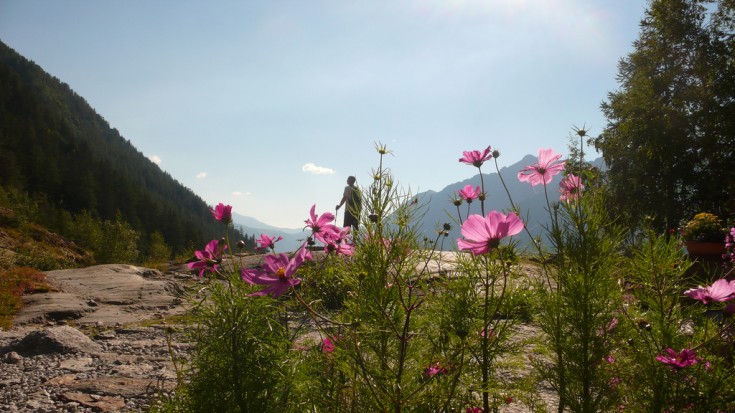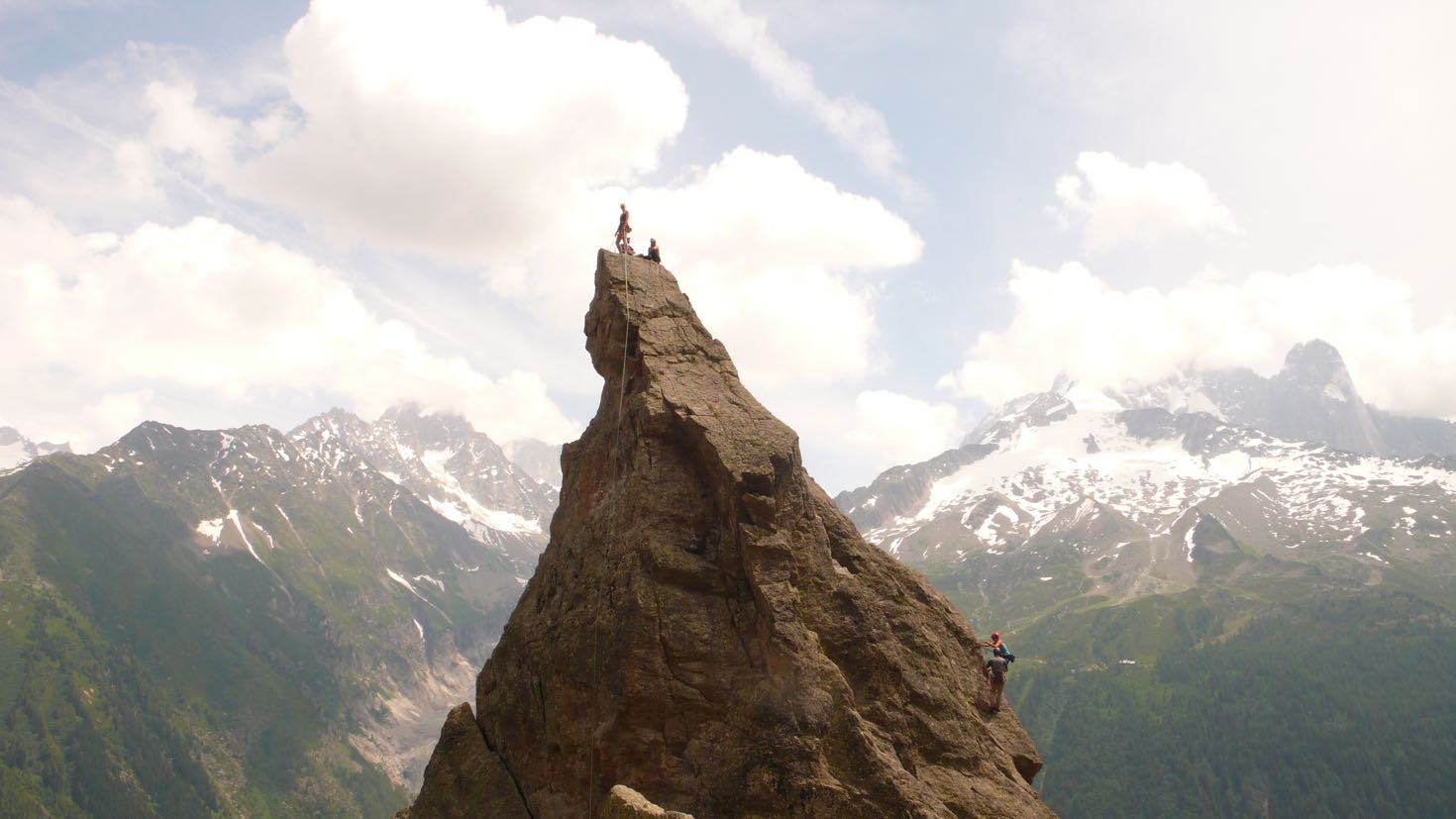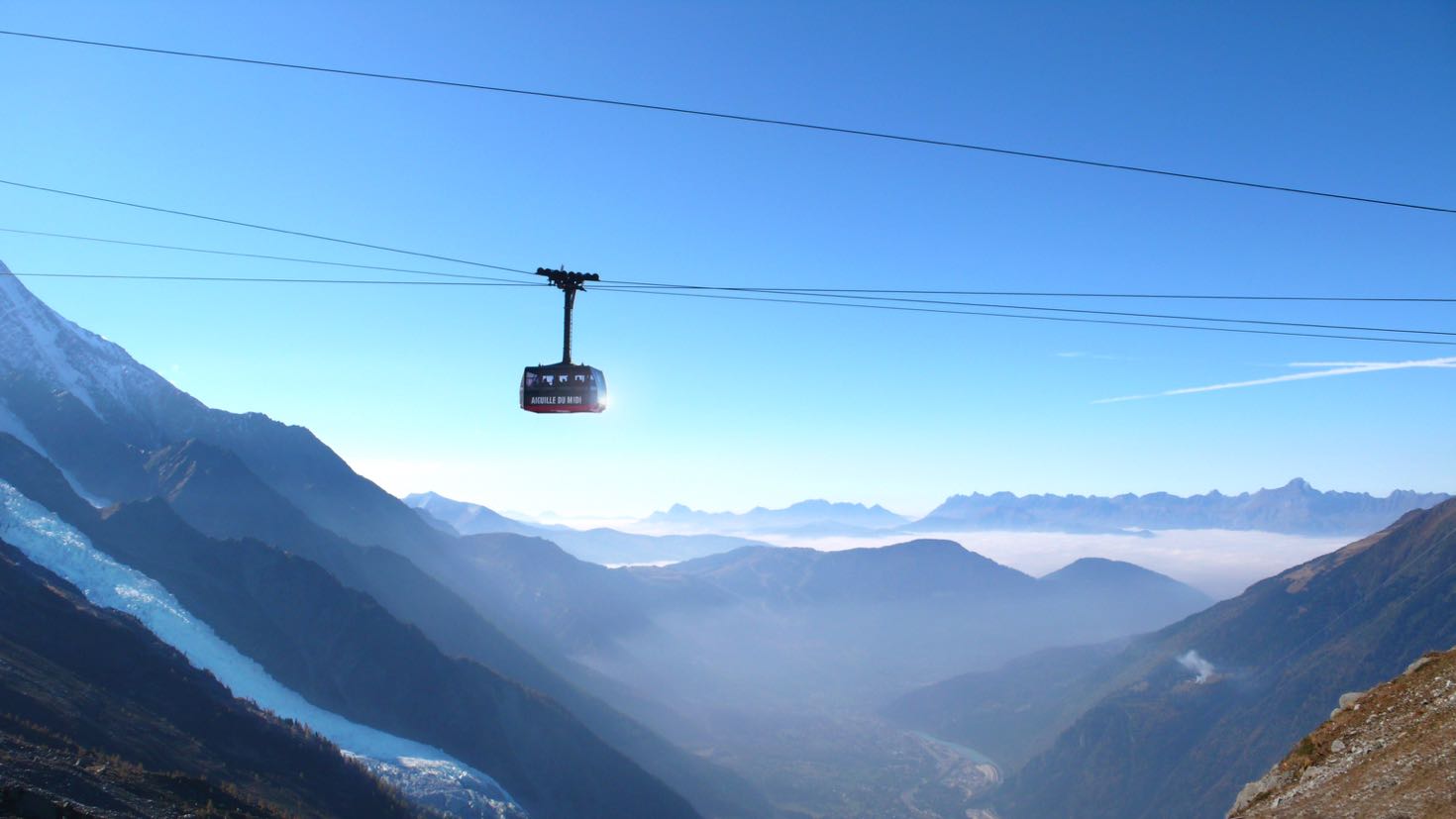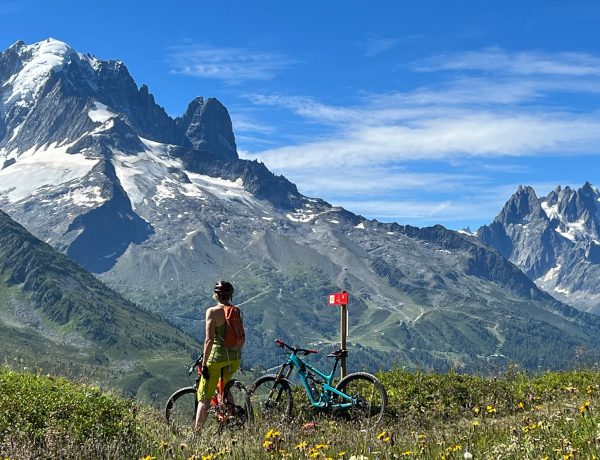When you’re walking in Chamonix, you’re going into a high mountain environment and it’s best to be prepared.

I recommend a visit to the Office de La Haute Montagne in Chamonix when you arrive, to get the latest information. There is a new exhibition on safety upstairs, and they will also be able to give you the current state of the paths, advice on where to go, and you can register with them if you need to tell someone where you will be walking. It’s in a nice stone building, opposite the tourist office, beside the church.

This isn’t intended as a complete guide for summer walking safety, as it’s a huge subject….just it’s a compilation of tips I follow myself.
Start small
It’s best not to begin your time in the Alps with a full day at high altitude. There are many wonderful easy walks to get warmed up on – the Promenade de l’Arve, Chalet Floria, the Petit Balcons…some acclimatisation will pay off well.

Timings
If you are going at a relaxed pace, taking photos and stopping for a picnic, many walks that are signed as two or three hours can easily take a full day. You don’t want to miss the last lift down or possibly have to walk down in the dark. Set off in good time – the mornings are often the best part of the day anyway, while it’s still fresh. Make sure someone knows where you’re going.
Weather

The weather can change very quickly in the mountains. Always check the forecast before setting off – a common weather pattern in summer is clear mornings and late afternoon storms.
We British in particular tend to have a robust attitude to walking in bad weather, we get enough of it! But it can be highly dangerous to be caught on an exposed balcony path in the Alps with no visibility, slippery slopes underfoot and high winds. You can get snow on the high trails at any time of the year, and serious accidents do happen. If the forecast is bad, exercise caution. Ideally, bring a phone or tablet to check the official site, but you can also call 0892 70 03 30 for an English forecast, and you will find it printed out at the lifts.
Clothing and equipment

I always take, as a minimum, a small backpack containing a light waterproof, water, some food (I like to take a pack of dried apricots, trail mix is also good), some money (in case I want to stop and eat or drink at a refuge or cafe), first aid kit with survival blanket, Compeed blister plasters, bag for rubbish, small lightweight headtorch, whistle, map, compass, sunblock, sunglasses, hat and phone – fully charged with emergency numbers:
PGHM Chamonix – Emergency mountain rescue +33(0)450 531689
European emergency number – 112
This might seem a lot, but takes up very little room.
It really is best to have strong walking shoes – it is surprisingly easy to twist an ankle in trainers.
Walking poles can be a huge help, they really do help on long descents and are indispensable when crossing snow. Light, collapsible ones can go on a backpack, or, more traditionally, you can buy a nicely carved walking stick inexpensively (less than 10 euros) at many shops, including some lift stations.
I find the best clothing for walking to be fine Merino wool – a natural fibre, dries quickly, keeps you warm even if it does get wet and doesn’t get itchy like normal wool. It’s not cheap, but lasts really well. There is an Icebreaker shop in Chamonix which has an excellent range, also look out for online sales which make it more affordable.
I use a light Goretex cycling jacket to pack as an emergency waterproof, and often take a bandanna – very useful as it can be made to protect whichever bit of you needs it, can be soaked in water to cool you down, etc
Pack it in, pack it out

There are lovely flowers along the paths – let them stay there! On a less tasteful note, please be considerate with use of toilet paper. There are toilets at all the refuges – try and use these where possible. If not, go far from the path, bury it well, and consider taking a plastic bag along and packing out your paper to dispose of in a bin.
Try to use minimal packaging for food and take it all back down with you to dispose of or recycle.
Rivers and water
The official line is that caution is recommended when drinking from streams, as they may have bacteria from animal droppings etc in them. I have to say I do it all the time and haven’t had any trouble. Pools however, are best avoided and if you find a drinking trough, drink from the tap rather than the basin, as wild and domestic animals may drink from the troughs. Also many people use them to cool their feet!

I do carry most of my water with me, and have a purifier for longer walks.
Some rivers in the area are used for hydroelectric power and can flash flood as a result of the barrages. These are generally well signed, so do exercise caution – they really can rise very fast. They are obviously most unsuitable for drinking as they’re pale, opaque green from the glacier deposits in them.
Snow
Packed snow (névé) can linger in some areas well into July, and it can be slippery and dangerous. If you encounter steep névé, use a lot of caution crossing it and don’t hesitate to turn back if it looks unsafe – I have done, many times. The high route to Lac Blanc can often have it – ask at the Flegere lift base or at the Office de la Haute Montagne about conditions.

Dogs
You will sometimes see the huge white sheep guarding dog known as a Patou (very similar to the Great Pyrenean).

Be aware that despite their very appealing appearance, like giant golden retrievers, they are extremely protective of their flocks and it’s not unknown for them to bite when approached, especially around sheep. You should always be cautious around them, and give them and their flocks a wide berth – they are not pets!

NB There are plenty of trails that are fine to enjoy with your own dog, but they are not allowed in the nature reserve which forms much of the south side of Chamonix, and you can be fined heavily for taking one there, so look out for warning signs.
Kids
There are always families enjoying these walks, however parents should be vigilant as there are some steep dropoffs.
For smaller children, the flat valley bottom is ideal for pushchairs but few of the higher walks are accessible. In theory you can trundle around near the lift stations of course but not all of them will allow pushchairs. There does seem to be some inconsistency in how this is enforced so worth checking if you want to try. However, child carriers can be rented at Snell sports in Chamonix which is much easier. Check that the altitude is suitable for the child’s age – the BMC have a useful paper on children at altitude.

Enjoy!
Chamonix is one of the most wonderful walking areas in the world. There is excellent safety infrastructure, with good local weather forecasting, trained lift staff and mountain rescue helicopters for emergencies. So with a few simple precautions you can enjoy your time here knowing you are well prepared!


